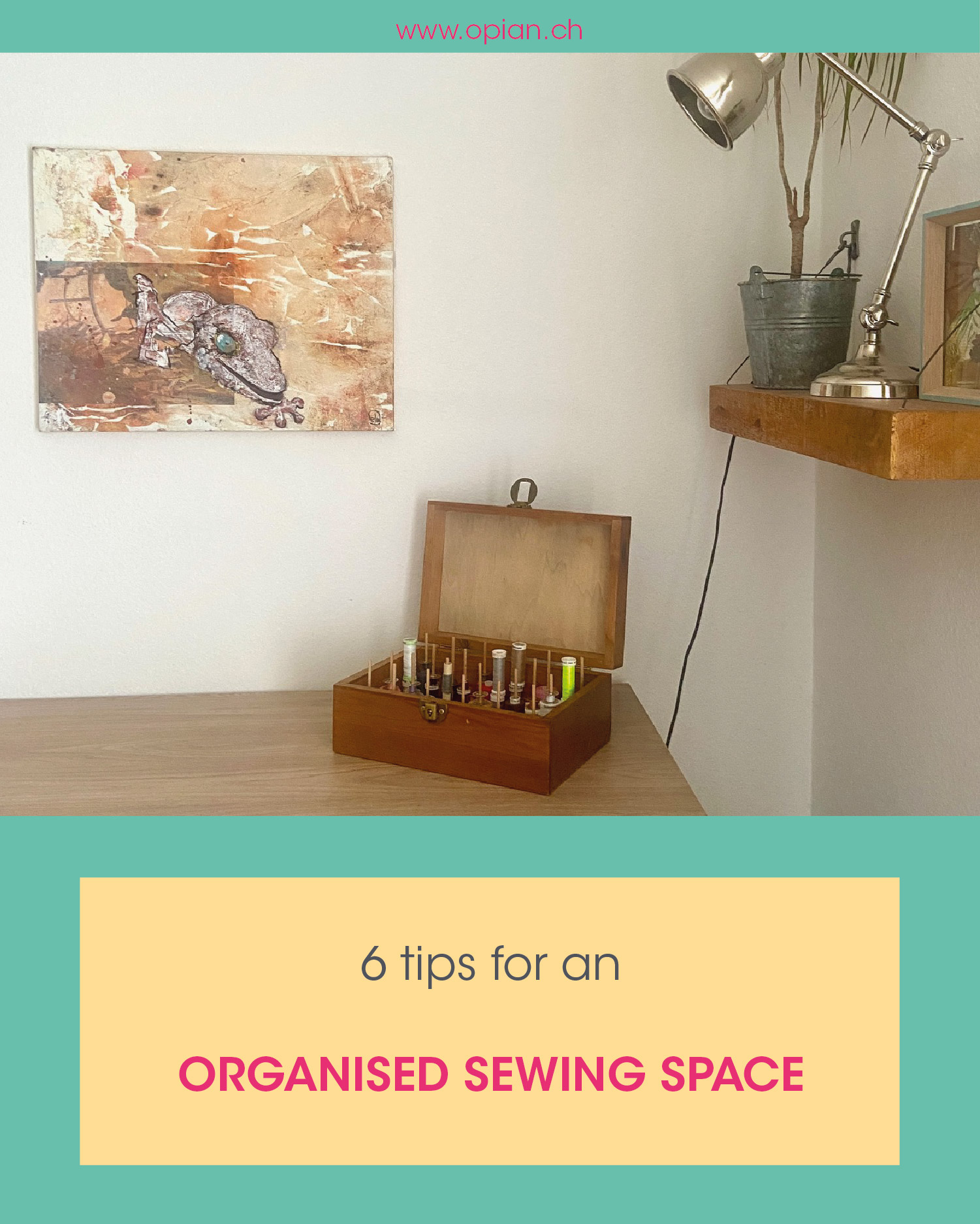Sewing tips | 6 tips for an organised sewing space |
Published :
03/09/2025 18:08:59
Categories :
Sewing Tips
Creating in an organised space can make all the difference to your sewing productivity and enjoyment. A clutter-free sewing room can help you find your tools more easily, reduce stress, and allow you to focus on your projects.
Here are six practical tips for transforming your space into a creative haven.

Organise sewing patterns efficiently
Sewing patterns can quickly become a headache if they're not well organised. A piece can go missing and it's difficult to replace it. To avoid chaos, you can use folders, envelopes, or binders to organise your patterns. Write down specific information to quickly identify the pattern. This will save you valuable time when searching.
Keep common tools close at hand
Having your most-used tools nearby can greatly improve your workflow. Place your scissors, tape measures, needles, and other essentials in a box or cart next to your sewing station.
Tidy up your work table often
The work table is the heart of your workshop and can quickly become cluttered with scraps of fabric, threads and tools. Get into the habit of tidying it up at the end of each sewing session, remove any unnecessary scraps of thread or fabric and put away the tools you are no longer using at the time.
A clear space stimulates creativity and prevents mistakes due to clutter.
Separate tools and supplies
To be efficient and find things easily, your equipment and tools must be stored properly. To do this, I advise you to separate the tools from the supplies, because we don't need them in the same way when sewing a project.
First, we gather tools such as scissors, pins, needles, chalk or seam ripper together to have easy access to what we need for sewing.
Then, sort the supplies by type, one box for threads, one for buttons, one for bias tape, one for zippers… It’s much easier to see what you have when everything is sorted by type, and also what to buy or not for your current project.
Install good light
Adequate light is essential to see the details of your sewing, especially for dark fabrics or precision work. It’s best to install an adjustable desk lamp next to your machine and work table with good white light to avoid eye fatigue.
Also, if you have access to a window, place your sewing station near natural light. Good lighting helps prevent mistakes and protects your eyes.
Store fabrics by type and size
Fabrics can quickly accumulate, get mixed up and disappear into the meanders of your closet, never to reappear again!
That’s why I suggest you fold the fabrics to the same size. Then sort them by material and/or use in a pile or in boxes in order to see the stock at a glance. As for supplies, this allows you to know what you have before buying a new fabric.
For small pieces, you can store them all in a box or basket, you know that these are pieces that will be used for accessories or small pieces.
If you are a fan of organisation, you can also label your fabrics by indicating the yardage, the composition and if it's already washed. To do this, I offer you a label template to download and print in the goodies section.
With these simple but effective tips, your sewing workshop will become a harmonious and functional space. By investing a little time in organization, you will gain in efficiency and save some money by avoiding buying twice. So, ready to give your creative space a facelift? Share your own tips in the comments!

